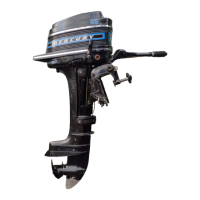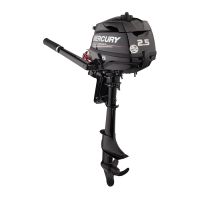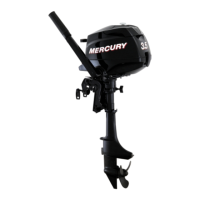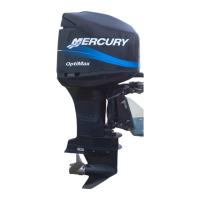GENERAL INFORMATION
90-857138R1 MAY 2000 Page 1C-11
Cylinder Leakage Testing
NOTE: Cylinder leakage testing*, along with compression testing, can help the mechanic
pinpoint the source of a mechanical failure by gauging the amount of leakage in an engine
cylinder. Refer to the manufactures tester instructions for proper testing procedures.
* Courtesy of Snap-On-Tools
Cylinder Leakage Tester (Snap-On-Tools MT324)
NOTE: Spark plug hole is a 12 mm diameter. Use Snap-On Tool MT26-18 adapter with valve
core removed.
Analysis
Due to standard engine tolerances and engine wear, no cylinder will maintain a 0% of leak-
age. It is important only that cylinders have somewhat consistent reading between them.
Differences of 15 to 30% indicate excessive leakage. Larger engines tend to have a larger
percentage of cylinder leakage than smaller engines.
If excessive leakage is present, first check that the piston is at top dead center of it’s com-
pression stroke. Leakage will naturally occur if the exhaust or intake valve is open.
To determine the cause of high percentage leaks, you must locate where the air is escaping
from. Listen for air escaping thru the carburetor intake, adjacent spark plug holes, exhaust
pipe, crankcase fill plug. Use the following table to aid in locating the source of cylinder
leakage:
Air Escaping From:
Indicates Possible
Defective:
Carburetor Intake Valve
Exhaust System Exhaust Valve
Crankcase Fill Plug Piston or Rings
Cylinder Head Gasket

